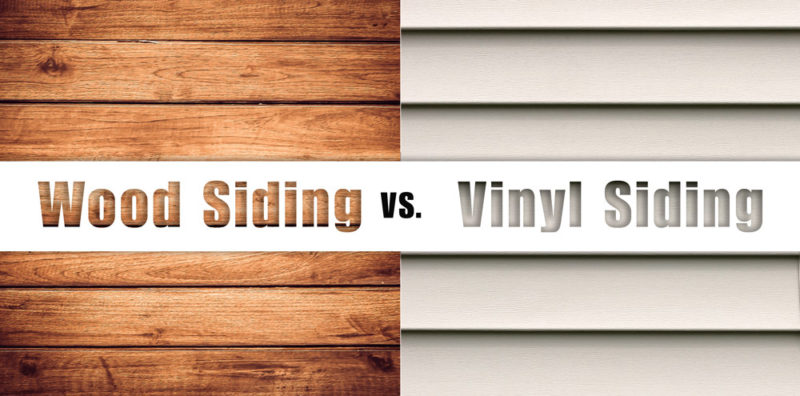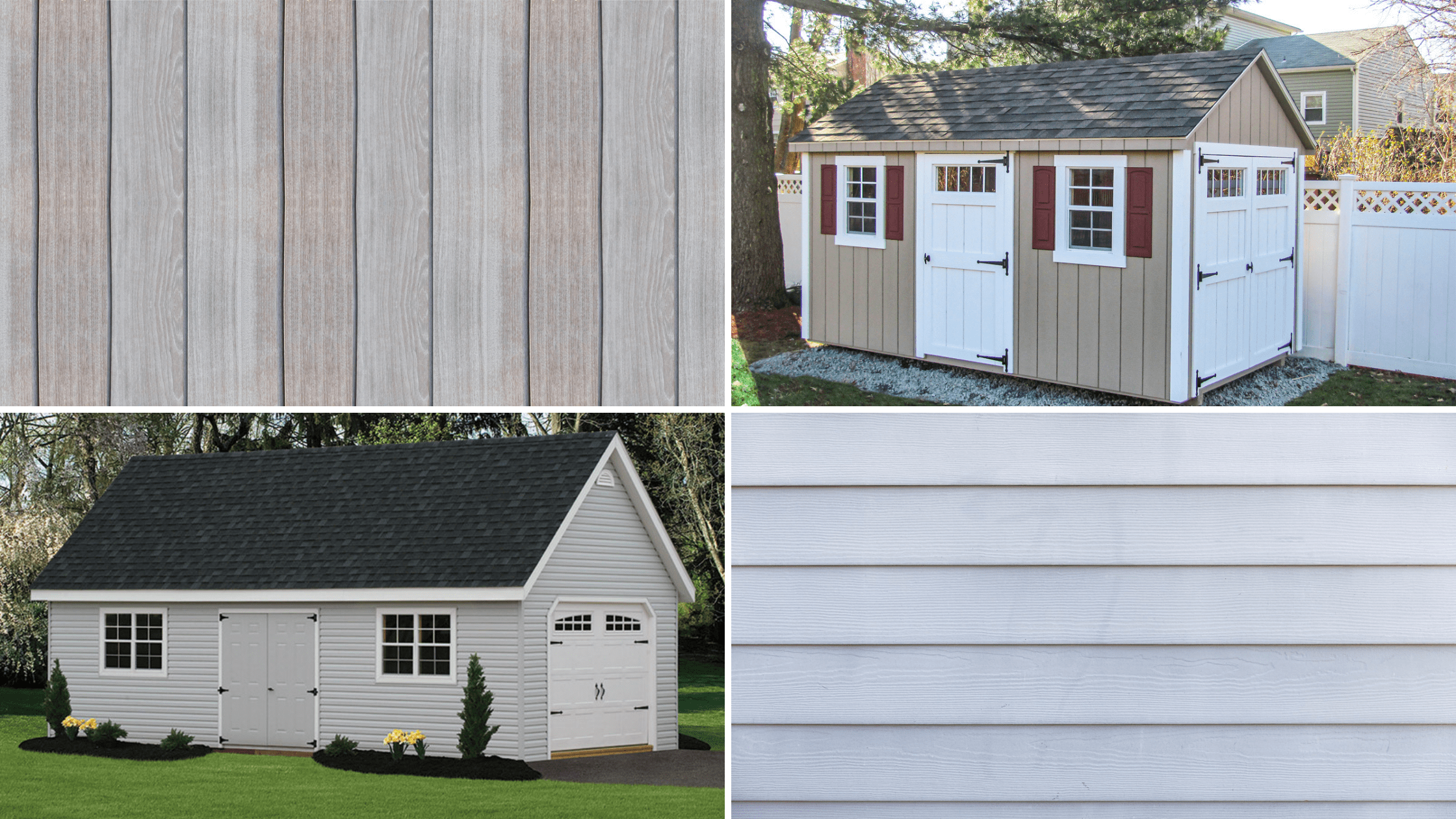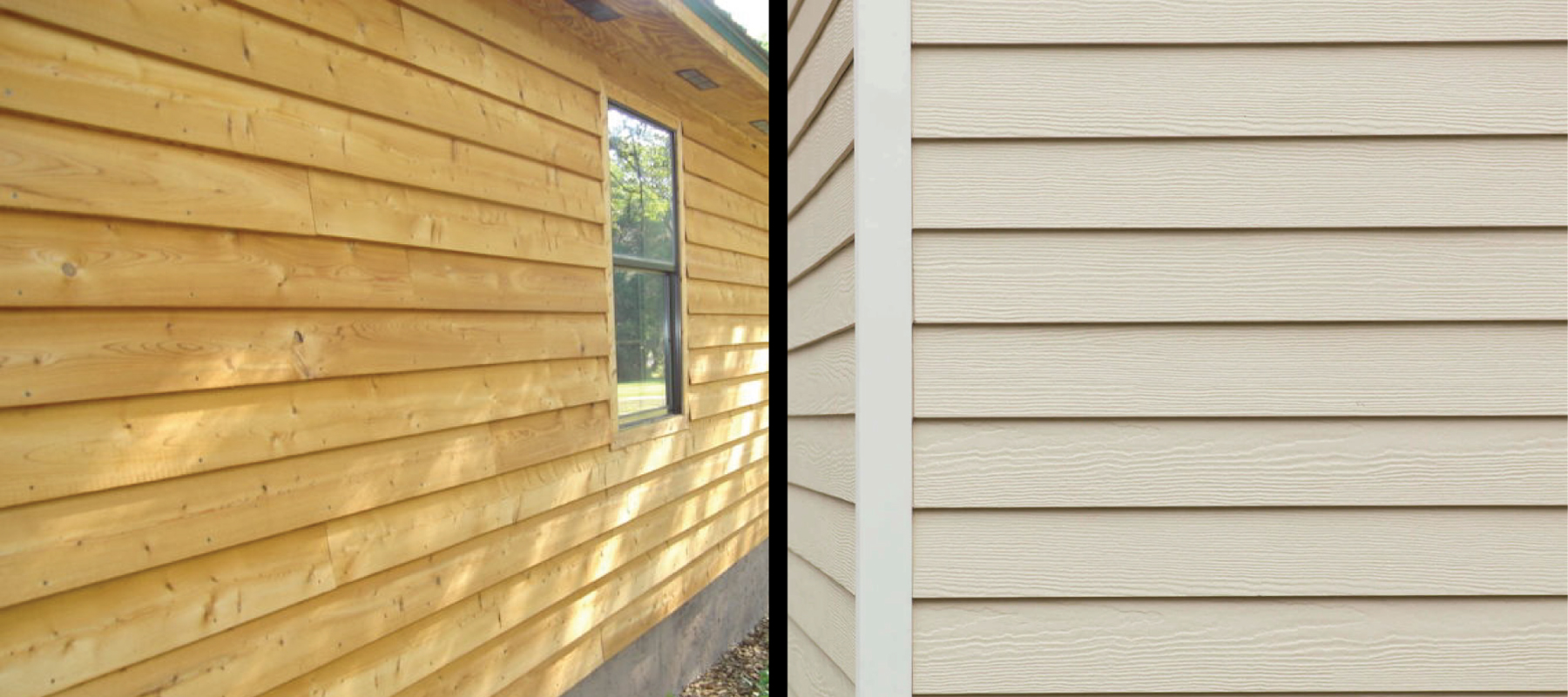Wood Siding vs Vinyl Siding: A Comprehensive Comparison
Delving into Wood siding vs vinyl siding, this introduction immerses readers in a unique and compelling narrative, with a focus on the key differences between these two popular siding options. From cost considerations to environmental impact, we explore every aspect to help you make an informed decision for your home.
As we delve deeper into the comparisons between wood siding and vinyl siding, you'll gain valuable insights into their material composition, costs, maintenance requirements, aesthetic appeal, environmental impact, insulation properties, energy efficiency, and installation processes. Stay tuned to discover which siding option aligns best with your preferences and priorities.
Introduction
Wood siding and vinyl siding are two popular options for covering the exterior of homes. Wood siding is made from natural wood materials such as cedar or pine, while vinyl siding is made from PVC (polyvinyl chloride) resin. Siding plays a crucial role in home construction by providing protection against the elements, enhancing curb appeal, and insulating the home.Wood siding has been used for centuries and has a traditional, rustic aesthetic.
It was a common choice for early American homes due to its availability and natural beauty. On the other hand, vinyl siding gained popularity in the 1950s as a low-maintenance alternative to wood siding. It is known for its durability, versatility, and wide range of color options.
Material Composition

Wood siding is typically made from various types of wood, such as cedar, pine, spruce, or fir. These wood materials are cut into thin boards and installed on the exterior of a building to provide a natural and rustic look.
Wood Siding Materials:
- Cedar
- Pine
- Spruce
- Fir
Vinyl siding, on the other hand, is made from polyvinyl chloride (PVC) resin. This synthetic material is manufactured to mimic the look of wood but offers increased durability and lower maintenance requirements.
Vinyl Siding Materials:
- Polyvinyl Chloride (PVC) Resin
Durability Comparison:
When comparing the durability of wood siding versus vinyl siding, vinyl siding is generally considered to be more durable. Vinyl siding is resistant to rot, insect damage, and moisture, making it a long-lasting option for exterior cladding. Wood siding, on the other hand, is susceptible to rot, insect infestations, and moisture damage over time, requiring more maintenance and upkeep to prolong its lifespan.
Cost and Maintenance
When it comes to choosing between wood siding and vinyl siding, cost and maintenance play a significant role in decision-making. Let's delve into the initial cost of installation and the maintenance requirements for both options.
Initial Cost of Installing Wood Siding
Installing wood siding typically comes with a higher initial cost compared to vinyl siding. The cost of the wood material itself is usually more expensive, and the installation process can be labor-intensive, resulting in higher overall costs.
Initial Cost of Installing Vinyl Siding
On the other hand, vinyl siding is known for being a more budget-friendly option when it comes to installation costs. The material is generally cheaper than wood, and the installation process is often quicker and requires less labor, leading to lower initial expenses.
Maintenance Requirements of Wood Siding vs. Vinyl Siding
Wood siding requires more maintenance compared to vinyl siding. Wood needs to be regularly treated, painted, and sealed to protect it from moisture, rot, and pests. This maintenance can add up in terms of time and cost over the years.In contrast, vinyl siding is relatively low maintenance.
It does not require painting or sealing, and it is resistant to rot, pests, and moisture. Occasional cleaning with soap and water is usually sufficient to keep vinyl siding looking good, making it a more cost-effective option in terms of ongoing maintenance.
Aesthetics and Design

Wood siding and vinyl siding both offer unique aesthetic appeal and design options for homeowners to choose from.
Aesthetic Appeal of Wood Siding
Wood siding is highly prized for its natural beauty and warmth. The organic textures and grains of wood create a timeless and classic look that enhances the curb appeal of any home. Over time, wood siding develops a rich patina that adds character and charm to the exterior of a house.
Aesthetic Appeal of Vinyl Siding
Vinyl siding comes in a wide range of colors, textures, and finishes, offering homeowners endless possibilities to customize the look of their homes. The smooth and uniform appearance of vinyl siding provides a clean and modern aesthetic that can complement various architectural styles.
Additionally, vinyl siding is available in options that mimic the look of wood, stone, or other materials for a more realistic appearance.
Versatility in Design Options for Wood and Vinyl Siding
Wood siding offers versatility in design as it can be painted or stained in various colors to match different preferences and styles. Homeowners can also choose from different wood species, such as cedar, redwood, or pine, each with its unique aesthetic qualities.
Additionally, wood siding can be installed in different patterns, such as horizontal lap, vertical board and batten, or shingle-style, allowing for creative customization.On the other hand, vinyl siding provides versatility in design through its wide array of colors and profiles.
From traditional lap siding to contemporary vertical panels, vinyl siding can be installed in different styles to achieve the desired look. Moreover, vinyl siding can be paired with accessories like trim pieces, shutters, and accents to enhance the overall design and add visual interest to the exterior of a home.
Environmental Impact
Wood siding and vinyl siding both have unique environmental impacts that should be considered when choosing between the two options.
Wood Siding
Wood siding is a natural material that is biodegradable and renewable. However, the process of harvesting wood for siding can contribute to deforestation if not done sustainably. Additionally, the use of chemical treatments and finishes on wood siding can release harmful toxins into the environment.
Vinyl Siding
Vinyl siding is manufactured from PVC (polyvinyl chloride), a type of plastic that is not biodegradable and can release toxic chemicals when produced or disposed of. The manufacturing process of vinyl siding also generates greenhouse gases, contributing to air pollution and climate change.
Comparison of Sustainability
When comparing the sustainability of wood siding to vinyl siding, it is important to consider factors such as the sourcing of materials, production processes, and end-of-life disposal. While wood siding is renewable and biodegradable, it may require more maintenance over time.
On the other hand, vinyl siding is durable and low maintenance, but its production and disposal can have long-term negative effects on the environment. Ultimately, the choice between wood siding and vinyl siding should be based on a careful consideration of their environmental impacts and sustainability factors.
Insulation and Energy Efficiency
Wood siding is known for its natural insulating properties, helping to regulate indoor temperatures by keeping heat in during colder months and out during warmer months. This can lead to lower energy consumption and costs for heating and cooling.
Wood Siding
Wood siding provides a certain level of insulation due to its thickness and natural composition. The density of wood helps to slow down the transfer of heat through the walls, contributing to energy efficiency in the home. However, the effectiveness of wood siding as insulation may vary depending on the type of wood and installation method.
Vinyl Siding
Vinyl siding, on the other hand, does not offer the same level of insulation as wood. While it does provide a protective layer against the elements, vinyl siding is thinner and less effective at regulating indoor temperatures. This can result in higher energy consumption and costs for heating and cooling compared to wood siding.
Energy Efficiency Comparison
When it comes to energy efficiency, wood siding generally outperforms vinyl siding due to its natural insulating properties. While vinyl siding may offer some level of protection, it is not as effective at maintaining consistent indoor temperatures and reducing energy costs.
Homeowners looking to improve energy efficiency in their homes may find that wood siding is a better option in this regard.
Installation Process

Wood siding and vinyl siding have different installation processes due to their unique characteristics and materials. Let's dive into the specifics of each:
Wood Siding Installation
Wood siding installation involves several steps, starting with preparing the surface by removing old siding, repairing any damaged areas, and applying a weather-resistant barrier. The wood siding is then cut to size, primed, painted, or stained, and finally nailed or screwed onto the exterior walls.
It requires precision and expertise to ensure a proper fit and finish.
Vinyl Siding Installation
Vinyl siding installation is relatively simpler compared to wood siding. The process typically involves measuring and cutting the vinyl panels to fit the walls, securing them with nails or clips, and finishing off with corner pieces and trim. Vinyl siding is lightweight and can often be installed more quickly than wood siding, making it a popular choice for many homeowners.
Comparison of Ease of Installation
In terms of ease of installation, vinyl siding generally comes out on top due to its lightweight nature and simple locking mechanisms. Wood siding, on the other hand, requires more skill and precision to install properly, especially when dealing with natural variations in wood grain and texture.
While both types of siding can be installed by DIY enthusiasts, vinyl siding is often considered more beginner-friendly.
Final Review
In conclusion, the debate between wood siding and vinyl siding offers a plethora of factors to consider. Whether you prioritize sustainability, durability, or design versatility, each type of siding comes with its unique set of advantages and considerations. By weighing the information presented, you can confidently choose the siding option that best suits your needs and preferences.